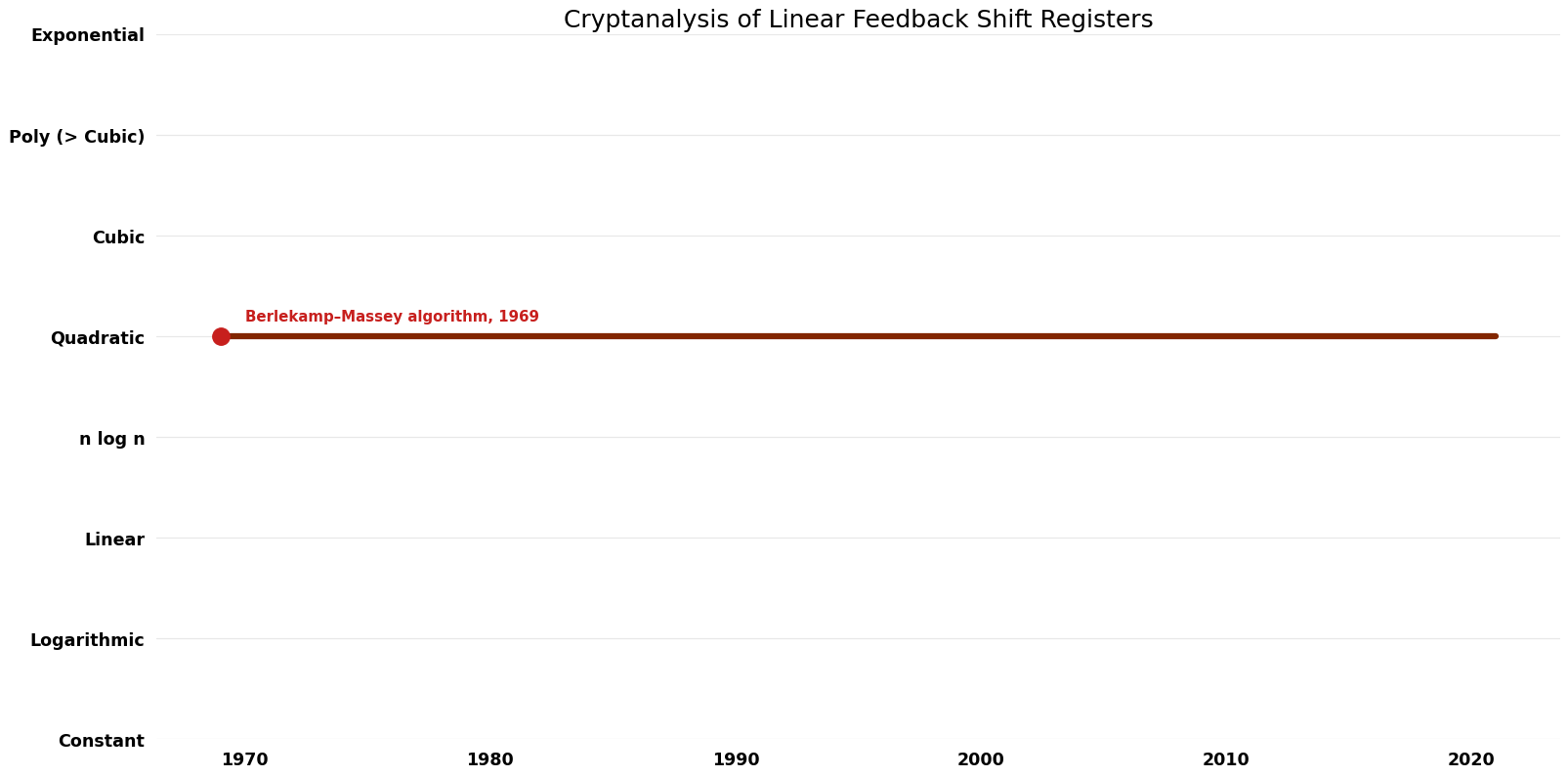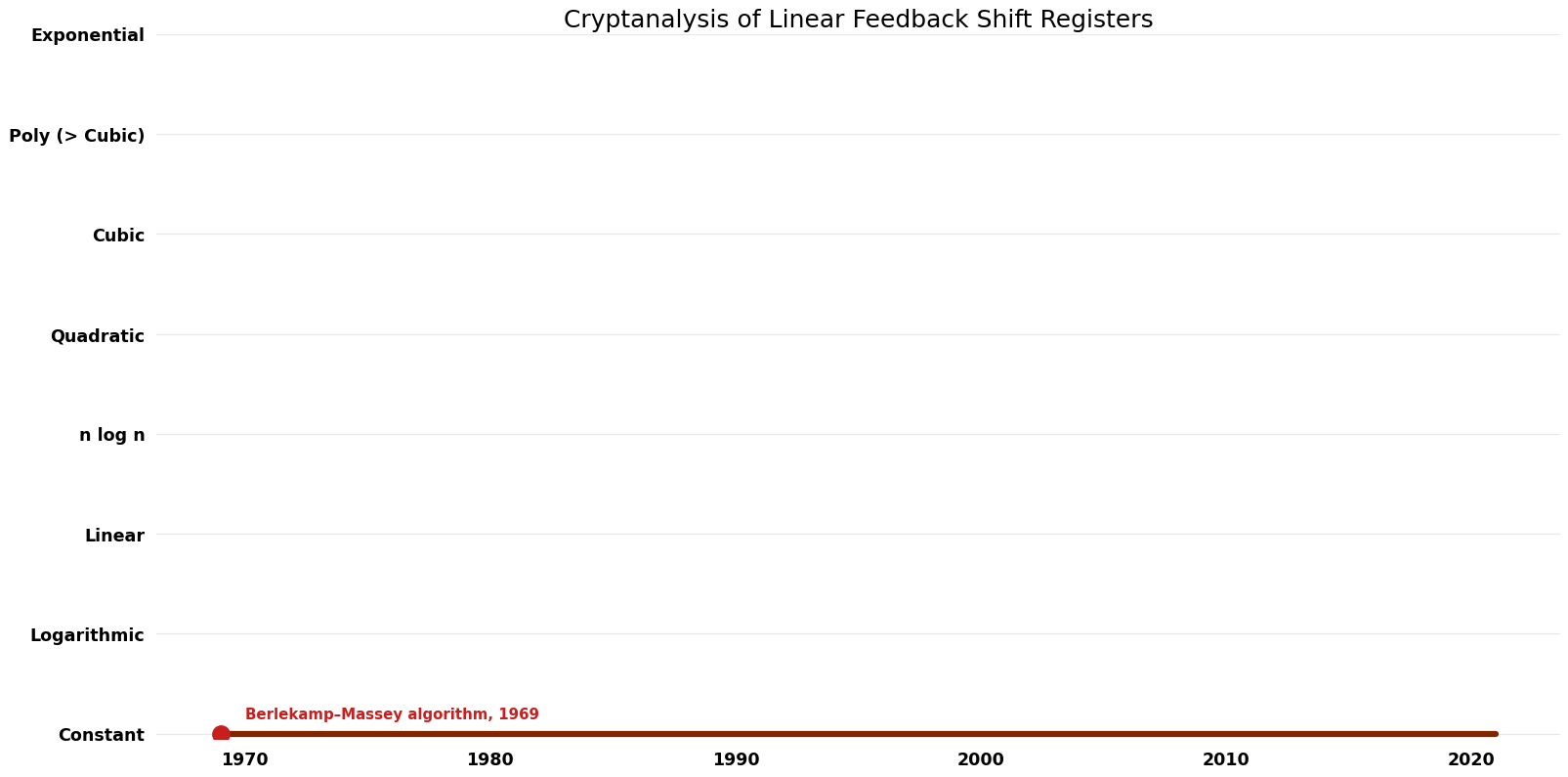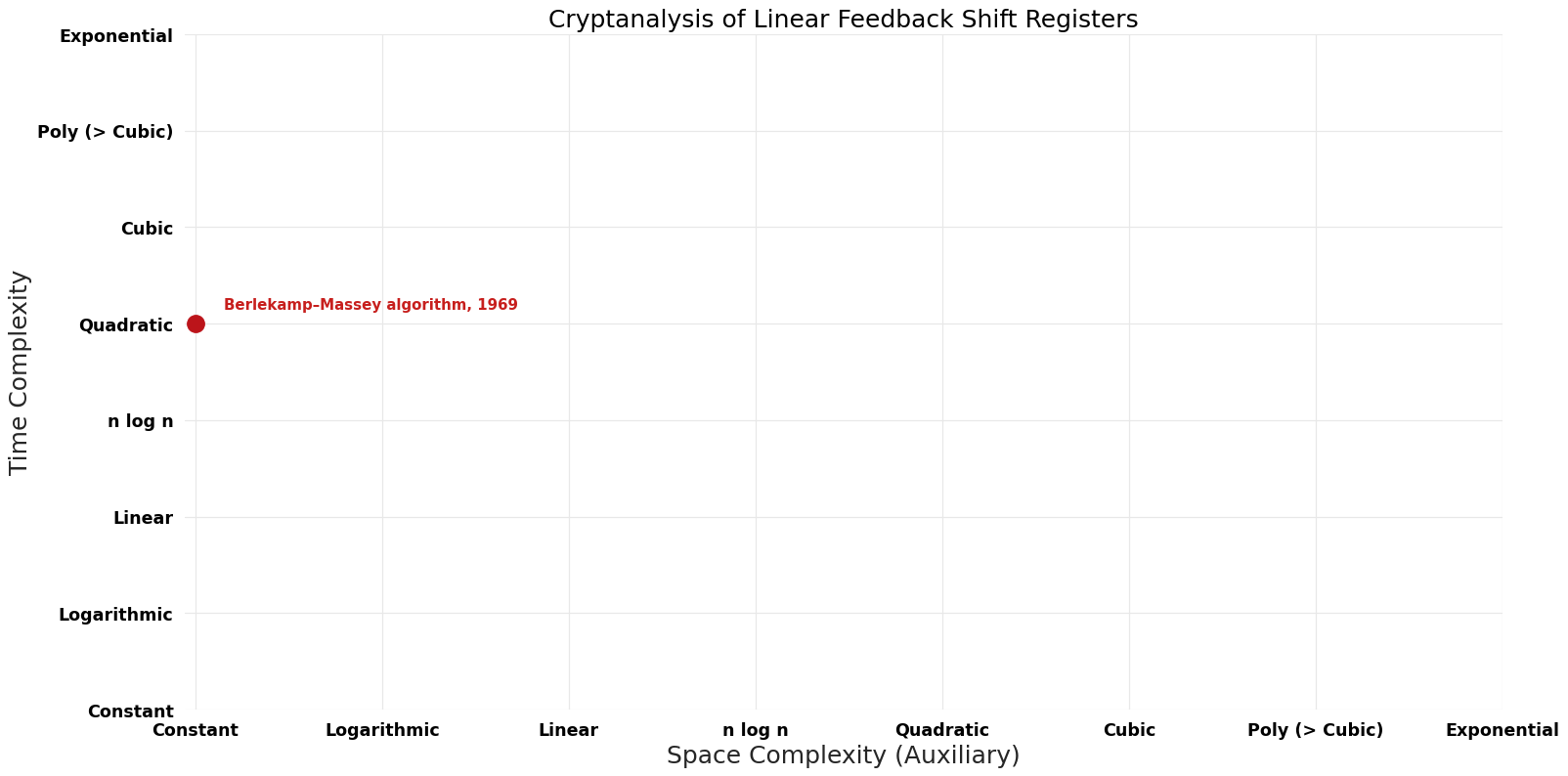Cryptanalysis of Linear Feedback Shift Registers: Difference between revisions
Jump to navigation
Jump to search
No edit summary |
No edit summary |
||
| Line 20: | Line 20: | ||
|} | |} | ||
== Time Complexity | == Time Complexity Graph == | ||
[[File:Cryptanalysis of Linear Feedback Shift Registers - Time.png|1000px]] | [[File:Cryptanalysis of Linear Feedback Shift Registers - Time.png|1000px]] | ||
== Space Complexity | == Space Complexity Graph == | ||
[[File:Cryptanalysis of Linear Feedback Shift Registers - Space.png|1000px]] | [[File:Cryptanalysis of Linear Feedback Shift Registers - Space.png|1000px]] | ||
== Pareto | == Pareto Frontier Improvements Graph == | ||
[[File:Cryptanalysis of Linear Feedback Shift Registers - Pareto Frontier.png|1000px]] | [[File:Cryptanalysis of Linear Feedback Shift Registers - Pareto Frontier.png|1000px]] | ||
Revision as of 14:04, 15 February 2023
Description
Find the shortest linear feedback shift register that can generate a given finite sequence of digits.
Parameters
No parameters found.
Table of Algorithms
| Name | Year | Time | Space | Approximation Factor | Model | Reference |
|---|---|---|---|---|---|---|
| Berlekamp–Massey algorithm | 1969 | $O(n^{2})$ | $O(N)$? | Exact | Deterministic | Time |


